The Philippines have a highly rich history despite the fact that they are a nation that is only a few hundred years old. A wide variety of foreign cultures and influences have been left behind on this land as a result of the arrival and departure of numerous invaders over the years. This is the reason why the archipelagic nation is consistently referred to as “a melting pot of cultures.” And because the Philippines is a nation with a large population that places a high value on Filipino food, this trait has naturally made its way into the country’s kitchens. Traditional regional dishes and Filipino food cooking methods have evolved into the contemporary plates that Filipinos are familiar with (and are known for) today as a result of the fact that the various regions of the pre-colonial Philippines had their own distinct culinary methods even before the arrival of outsiders and as a result of the various influencers dropping in throughout the centuries that followed. This article provides a guide to the gastronomic must-try dishes that can be found across different regions in the Philippines, as well as the best restaurants at which to enjoy them.
Filipino cuisine’s historical and cultural influences
There are a number of different foreign influences on Philippine cuisine and culinary culture, all of which have effectively merged with the traditional native or Filipino cuisine.
The indigenous cuisine of the Philippines is greatly inspired by Chinese cuisine, which was brought to the Philippines by various traders and, later on, Chinese immigrants who were primarily from the Fujian province of China and the Cantonese.
The cuisine of the Philippines has been heavily influenced by the cuisine of its various colonizers, including the Spanish, who ruled the Philippines for 300 years; the Americans, who ruled the Philippines for a number of decades; the Japanese, who ruled for a few years during World War II; and the British, who ruled for a couple of years (bringing along Indian workers with them).
Additionally, Mexican influences can be found in Philippine cuisine as a result of workers and traders from the galleon trade bringing ingredients and meals to the Philippine coasts. In addition, there are indigenous foods that come from the country’s Islamic regions, which were affected by the countries that are located nearby in Southeast Asia.
It can be difficult, particularly for those who are not native to the country, to compile an exhaustive list of traditional Filipino foods due to the fact that Filipino cuisine is not just local but also regional, seasonal, and inspired by a wide variety of other ethnic and Chinese cuisines.
This also means that it is difficult to adequately define traditional Filipino food in just a few phrases, but there are several fundamentals that can give you a better idea of what is meant by the term.
An Introduction to Regional Dishes in the Philippines and Where to Find It
The cuisine of the Philippines can be broken down into two categories: regional and local. This indicates that there are practically hundreds of different recipes that may be prepared with Filipino ingredients, which is an ambitious goal for even the most experienced foodies. Food tours in the Philippines are extremely common among tourists, particularly those who are visiting the country for the first time.
To get you started, here are some examples drawn from each of the three primary geographic regions that make up the Philippines. Take notice that you may now find many of these Filipino food in many locations other than the regions or provinces in which they are traditionally prepared.
Regional Dishes in the Philippines
Fresh lumpia or lumpiang ubod (Western Visayas Region, Negros Occidental)
It is one of the many varieties of lumpia that can be found in the Philippines, and it is one of the most popular Filipino food. The lumpia that is native to Negros Occidental is distinct from the other lumpia that is eaten in other parts of the country. The Lumpiang Ubod (fresh palm spring rolls) of Silay, Negros Occidental, have a fresh and delicate rice flour wrapper; they are made with young ubod, which are white strips of fibrous flesh from the center of the palm vegetable rice flour; and they are served without a peanut sauce, which is typically offered alongside spring rolls.
Lechon de leche (South, Visayas, and Mindanao Regions)
Lechon de leche or roasted suckling pig is one of the most popular Filipino food. The stuffed lechon served in the regions of the South, the Visayas, and Mindanao are typically made with lemongrass, garlic, spring and chopped onions, and chili peppers; however, lechon is best paired with garlic fried rice. Cooking meat such as lechon de leche can be made with everything from ginger to peppers to garlic chives to even pineapples. They are salted more severely, which gives the lechon a flavor that allows it to stand on its own without further seasoning. It can also be served with a dipping sauce of banana ketchup or soy sauce.
Lechon (Region 7: Cebu)
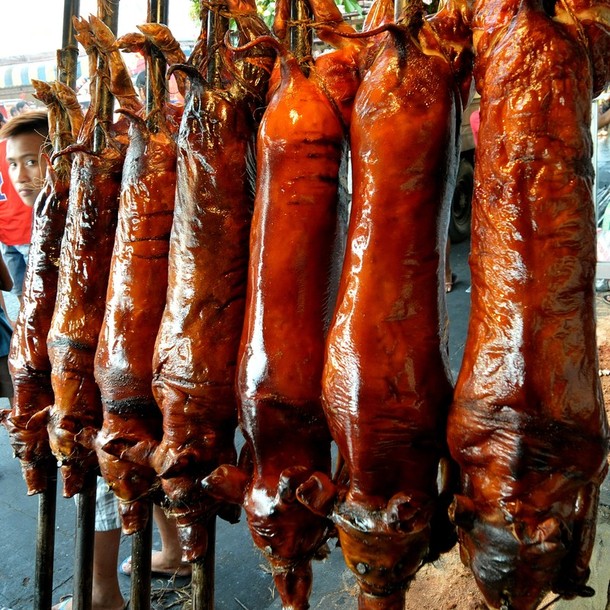
The place where it first appeared In the 1920s, Cebu became the birthplace of lechon, and the town of Talisay on the island was home to the very first lechoneros. You could say that this is the reason why Cebu is usually brought up whenever the word “lechon,” or fried dishes, is mentioned; after all, it is the place where the very best lechon is produced. Lechon or roasted pig is one of the most popular Filipino food, and it is best paired with garlic fried rice. It can also be served on a banana leaf with a dipping sauce of banana ketchup or soy sauce.
Arroz Caldo or Chicken Soup (Luzon)
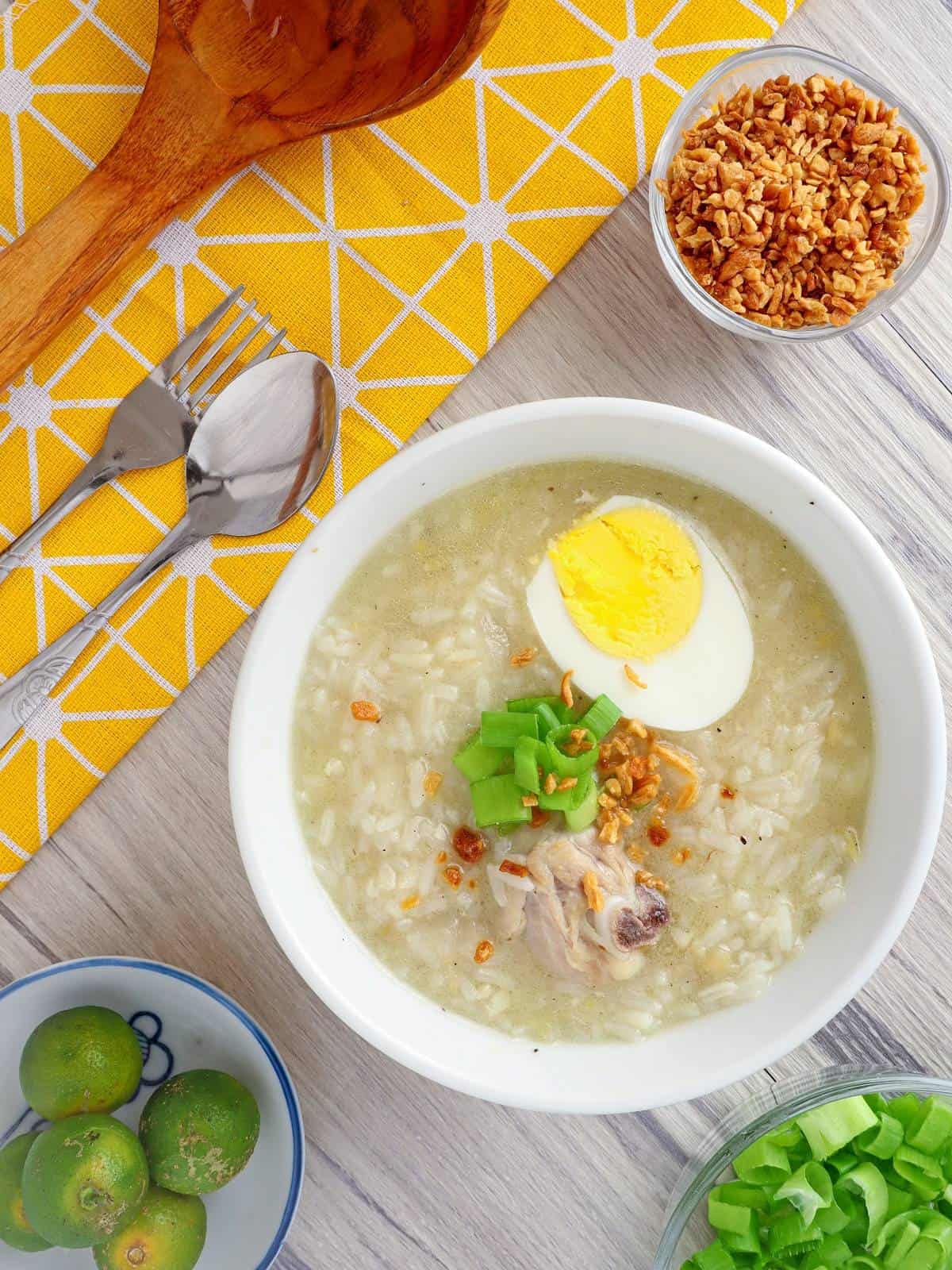
Rice and chicken are the main ingredients in arroz caldo, a traditional Filipino food that is highly flavored with ginger and topped with toasted garlic, scallions, fish paste or fish sauce, soy sauce and black pepper. In most restaurants, it is accompanied by a hard-boiled egg and may be seasoned with either calamansi, fish sauce or fish paste (also known as patis). The majority of preparations also include safflower, also known as kasubha, which imparts the dish with its signature yellow color. One variety of lugaw is known as arroz caldo. In Philippine culture, it is considered a “comfort food,” and it is also a common Filipino food that is served at breakfast.
Chocolate rice porridge or champorado (Visayas Region)
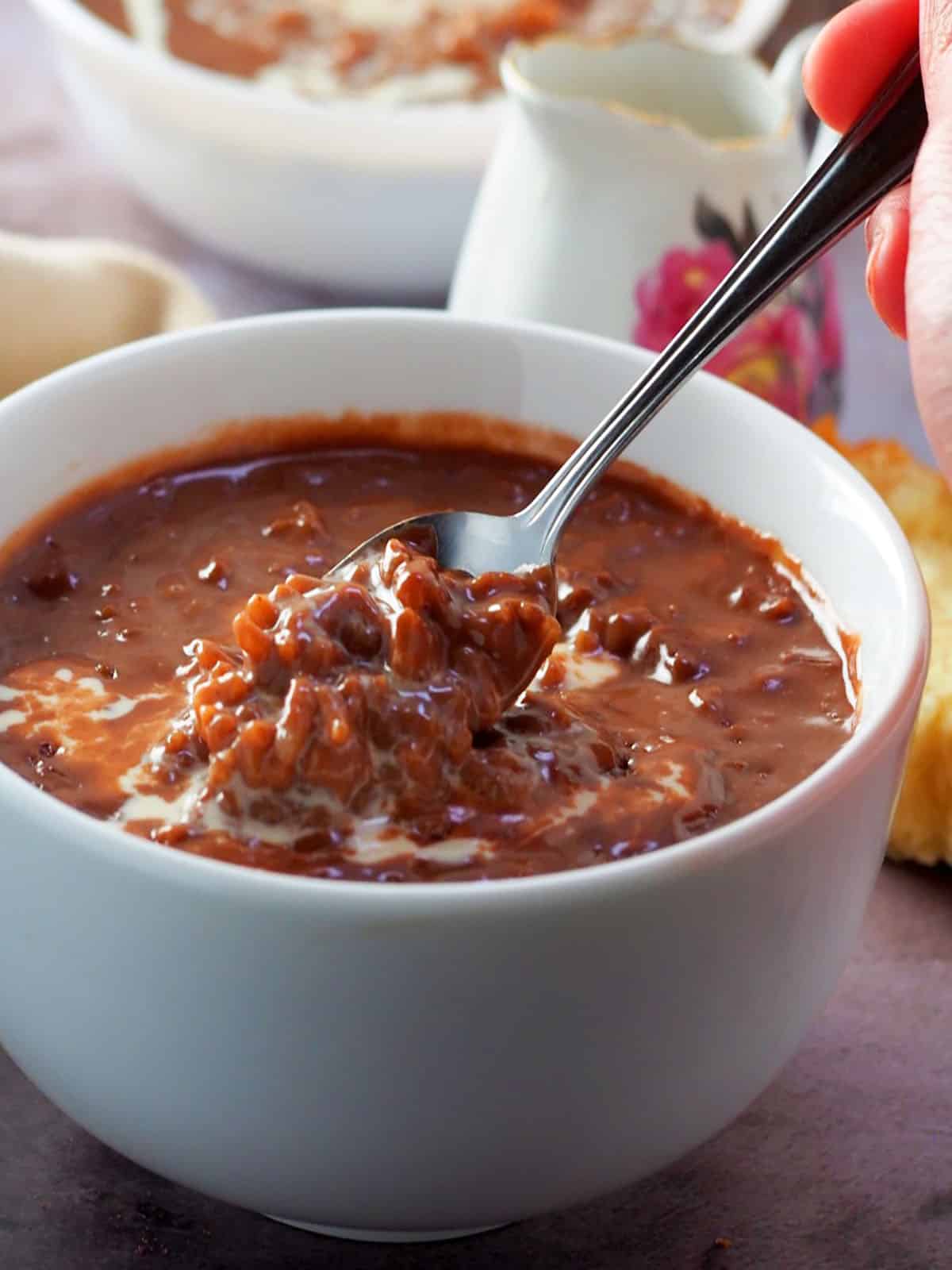
Champorado, also known as Filipino chocolate rice porridge, is typically eaten for breakfast. It is one of the traditional Filipino food delicacies, whether you believe it or not. Although having chocolate for breakfast could seem like a dream come true, there is one important thing to keep in mind. In most Filipino food, it is served alongside tuyo, which is a type of salted and dried fish. Dried fish is also one of the famous Filipino food.
Glutinous rice, also known as sweet rice, sticky rice, or malagkit, is the ingredient that goes into making champorado. This particular variety of rice has short grains and is known for having a high starch content. In the image that you can see above, there is a clear distinction between glutinous rice and jasmine rice, which is classified as medium- or long-grain rice. Because it contains more starch than long-grain rice, short-grain rice has a tint that is less transparent.
Pakbet or Pinakbet (Ilocos Region)
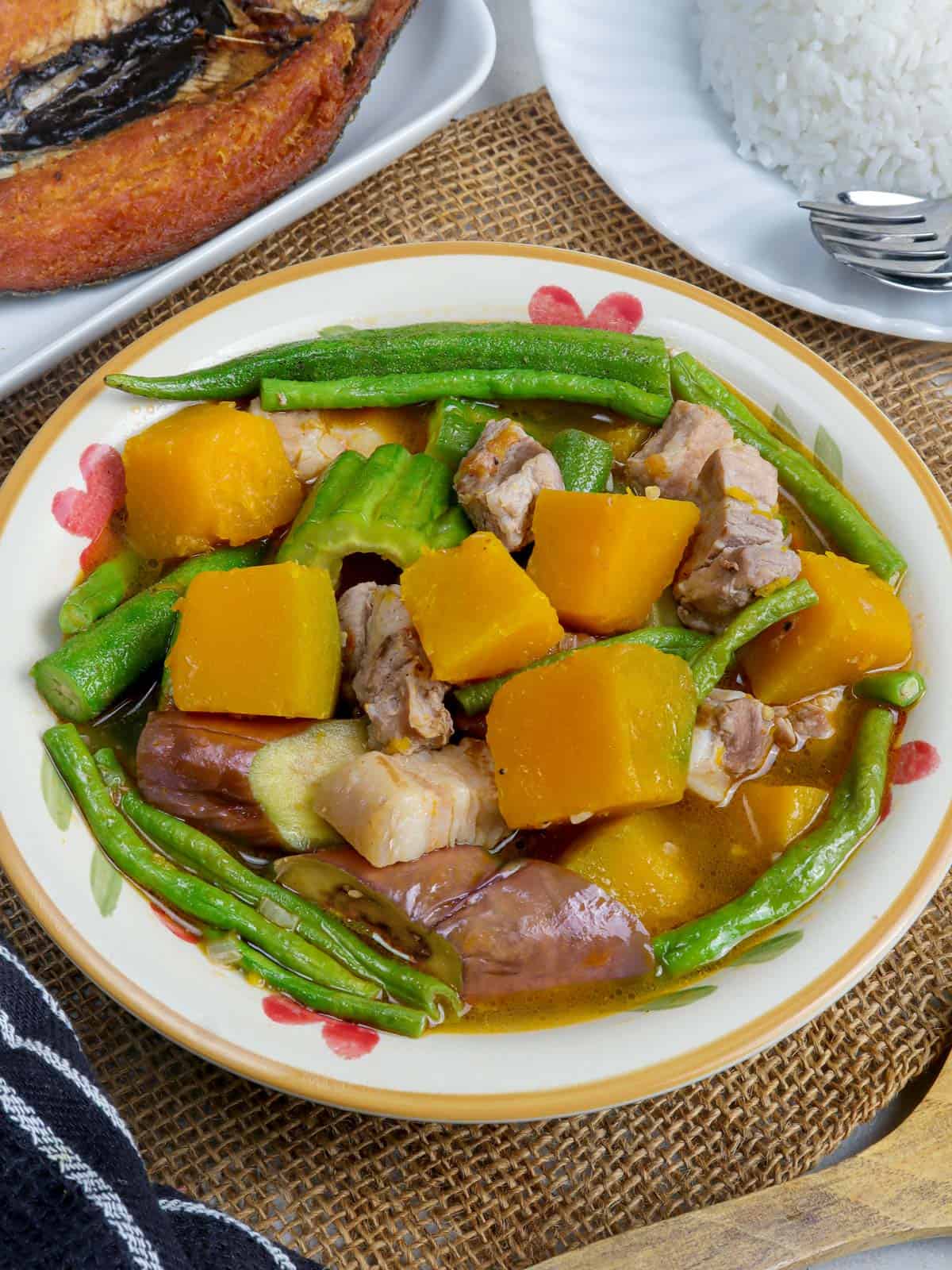
Pakbet, often spelled pinakbet, is a famous traditional Filipino food and vegetable dish that has its roots in Ilocos Province, which is located in the northern region of the Philippines. The veggies that are used in this recipe are often cultivated in the backyards of the villagers, so they are available for consumption for the vast majority of the year. This mouthwatering dish is comprised of a variety of chopped vegetables, some of which include bitter melon, eggplant, shrimp paste, okra, and string beans. Anchovy sauce, also known as bagoong isda, is used to add flavor to pakbet, which is cooked in a clay pot referred to as a “palayok.”
The popularity of this meal has led to the development of a number of different variations. Pakbet is typically prepared with squash (kalabasa), soy sauce flavor to taste, fish sauce and bagoong alamang (shrimp paste), which are both used to impart flavor to the dish in the National Capital Region, which consists of Manila and the cities that are located nearby. “Pakbet Tagalog” is the name given to this particular version.
Stir-fried noodles or pancit (Region 7: Cebu)

The Filipino food known as pancit is a staple that can be found at a variety of festivities and feasts. It is made up of noodle dishes that have been stir-fried with various types of meat and vegetables, including chicken, pig, shrimp, celery, carrots, spring onions, garlic, cabbage and also soy sauce flavor to taste. The dish was originally prepared in China, and its name comes from the Hokkien phrase “pian i sit,” which translates to “something convenient that is cooked quickly.” The cuisine’s origins may be traced back to China.
Pancit developed over time and eventually became a cuisine that is synonymous with the Philippines. As a result, there are now many different kinds of pancit, such as pancit canton and pancit bihon. Egg noodle dishes are utilized in the preparation of pancit canton, while pancit bihon calls for the use of thin, translucent rice noodles.
The dishes are frequently served for birthday celebrations in the Philippines because, according to old Filipino food myths, they symbolize long life and good health.
Rice cakes, or biko (Visayas Region)
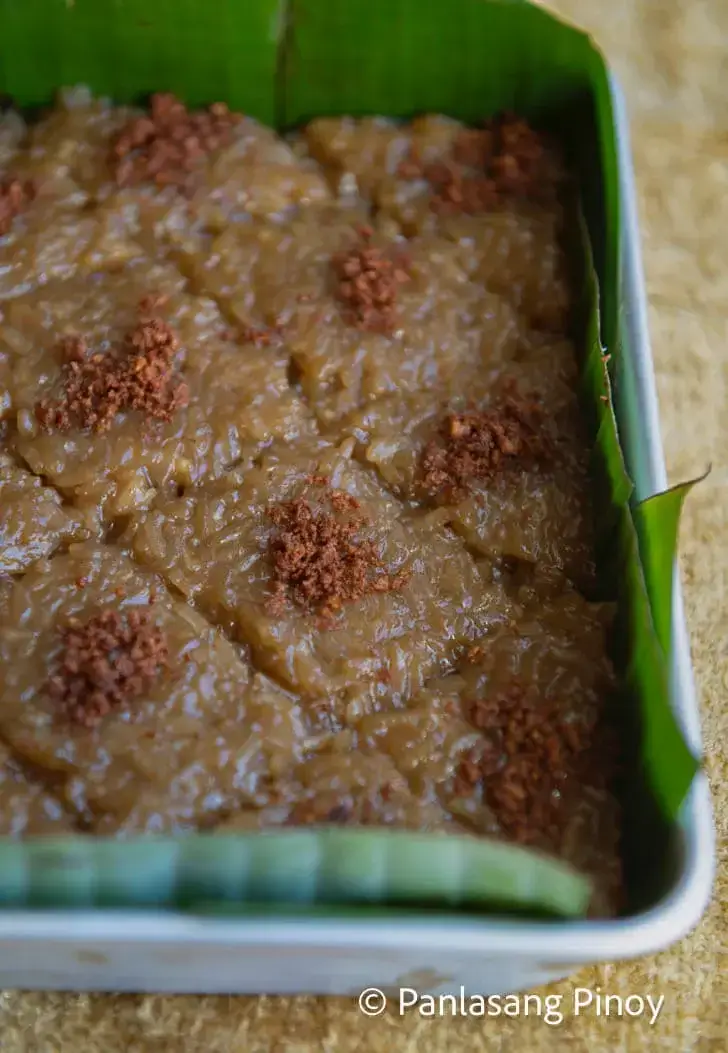
Biko, also known as steamed rice cakes, is a local Filipino food delicacy known as ‘kakanin’. Although there are many variants of steamed rice cakes in the Philippines, Biko stands out as being popular for merienda, or local snacks. Biko is made by cooking glutinous rice with coconut milk and brown sugar, and it is then topped with latik. The latik might come in the form of curd or syrup, depending on your preference. Biko is a popular dessert that is served on a bilao, or banana leaf, which is a round wooden bamboo tray lined with coconut-oiled banana leaves.
This delicacy is traditionally served during special events like birthday parties, family reunions, and fiestas. Purple glutinous rice, also known as tapol, is typically used in its preparation and is best paired with coconut milk.
Typically, it is prepared in the form of little patties and consumed very early in the morning alongside sikwate, which is a type of hot chocolate. In addition to that, it is frequently used with ripe mangoes.
Leche flan

Leche flan is a traditional delicacy in the Philippines that is created from egg yolks, evaporated milk, and condensed or coconut milk. It is then finished off with a caramel sauce after being baked in a water bath. There are numerous establishments in Quezon City that sell leche flan. You should be able to locate it in any of the Filipino restaurants or bakeries. You can also purchase it online from a variety of websites that focus specifically on Filipino cuisine.
Leche flan is a popular Filipino food that consists of a thick and creamy custard that is baked in a hot water bath before being drizzled with a sugary caramel sauce on top. This delicacy, which is the Filipino equivalent of flan, is most frequently seen during celebrations that are hosted in the Philippines. My most treasured aunt’s handmade leche flan features prominently in many of my early recollections.
Laing (Region V-Bicol)
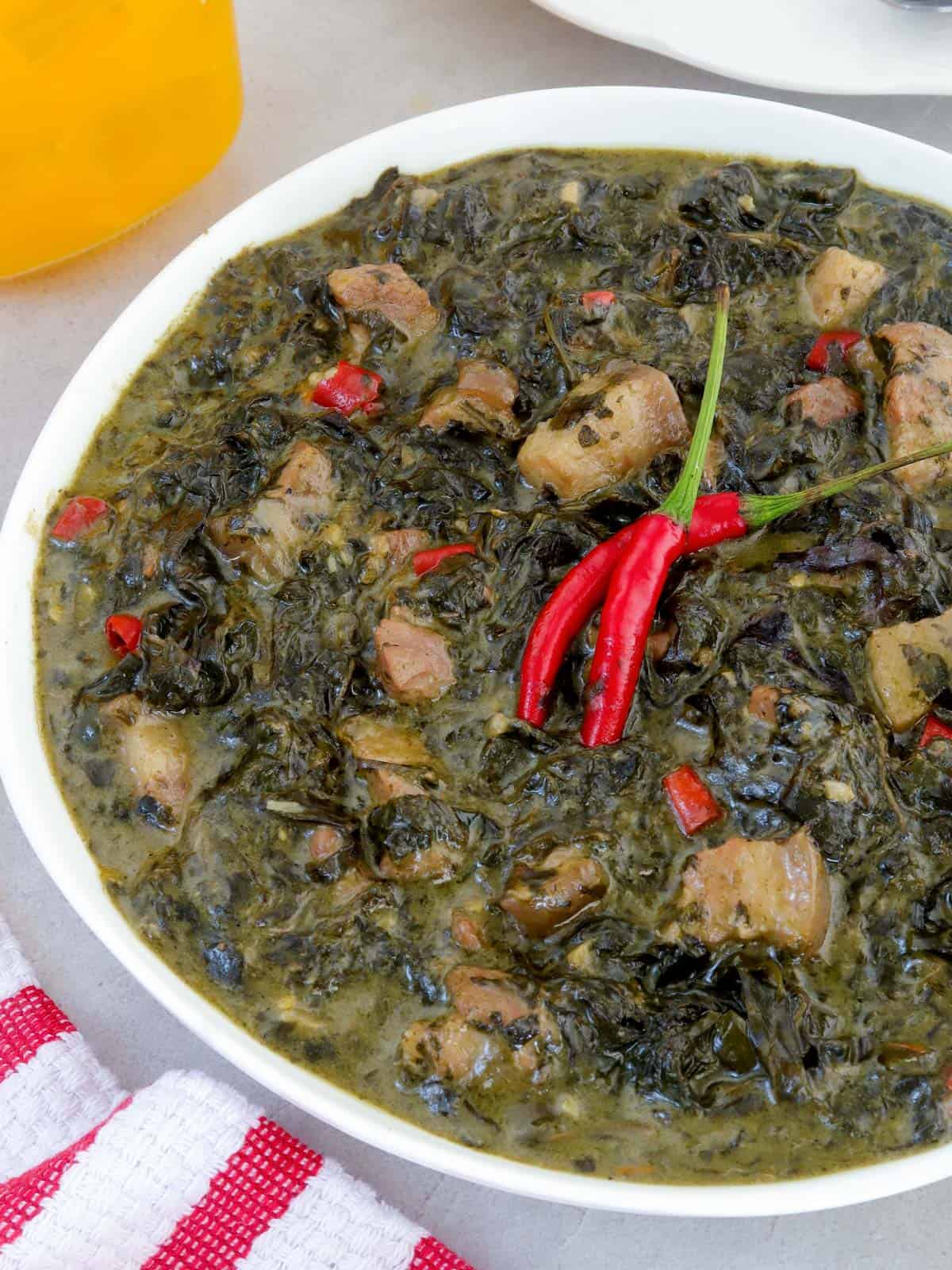
The Laing people are indigenous to the Bicol region. It should be eaten with a bowl of white rice, as is the case with all traditional Filipino cuisine. This meal consists of shredded or entire taro leaves cooked in coconut milk with meat or seafood that has been seasoned with labuyo chile, lemongrass, garlic, shrimp paste, shallots, ginger, coconut milk, and shrimp paste. The dish can also be served with whole taro leaves cooked with coconut milk. It is native to the Bicol Region, where the locals refer to it by its more common name, pinangat. It is best paired with normal rice, garlic rice, or fried rice.
The primary components of this dish are taro, coconut milk, or gabi, which are cooked down in coconut milk before being combined with shrimp paste and chillies. Laing is the perfect blend of the delectable balance of light, creamy coconut that comes from coconut milk and hot, spicy flavors. The Bicol people are known for their love of spicy food, and laing is the perfect example of this affection. The dish’s light and creamy consistency is complemented beautifully by the spicy flavor, which acts as a palate awakener with just the right amount of heat.
Filipino steamed rice cakes, or puto (Region V, Bicol)
Puto, a Filipino food, is a steamed rice cake snack that is popular in the Philippines and may be eaten at any time of the year. Because it is simple to prepare and consume, and sometimes it can use artificial food coloring for its colorful and vibrant appearance as well as transport, this dish is ideal for bringing to a get-together or potluck.
Traditionally, it is prepared by grinding rice, and it can be consumed either on its own or accompanied by butter or grated coconut (the coconut milk can be used in any other Filipino dish). On the other hand, this steamed rice cake recipe is an altered variation because it calls for cake flour rather than pulverized rice. There are numerous iterations, each with a unique combination of flavors, such as ube (also known as purple yam) and pandan made with coconut milk. Additionally, cheese, grated coconut, or a salted egg may be placed on top of it.
Grilled chicken or chicken inasal (Western Visayas Region)
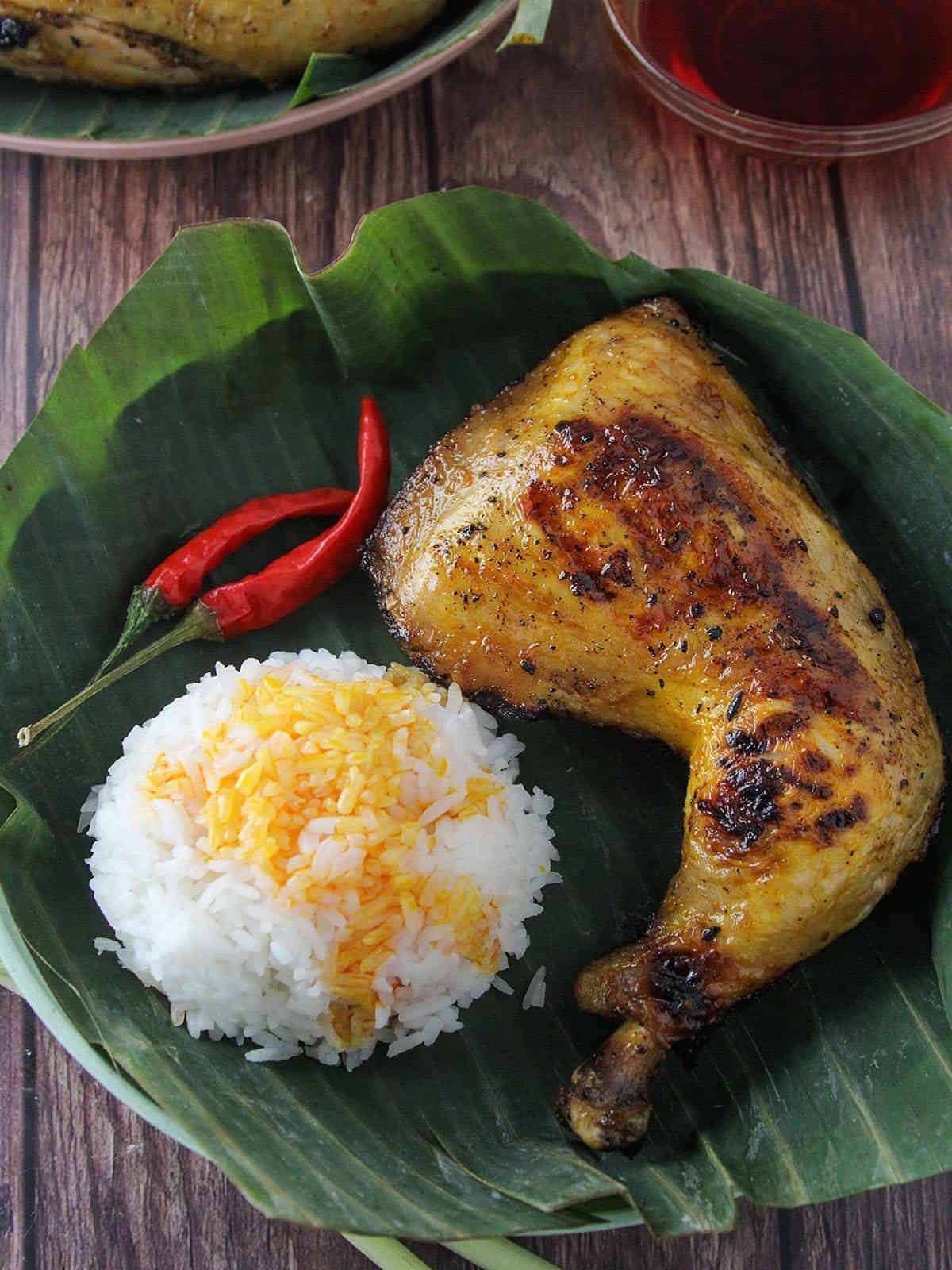
The Western Visayas region is home to a delicious Filipino food or street food chicken marinated dish called “Inasal,” which is traditionally cooked over an open flame. Vinegar, soy sauce, calamansi juice, lemongrass, garlic, ginger, brown sugar, and atsuete oil are the components that go into making the marinade, which gives the dish its signature flavor and color. In some other iterations of the dish, Sprite or 7-Up is included as well, both for the purpose of imparting taste and acting as a tenderizer.
The various portions of the chicken inasal, or grilled chicken, are typically skewered on bamboo, after which they are grilled over hot coals to the point where they are perfectly moist while being basted in oil. This charred chicken inasal, or grilled chicken, has a smokey flavor, a tangy flavor, and a savory-sweet flavor. The chicken inasal, or grilled chicken, was first marinated in coconut vinegar with lemongrass, ginger, and muscovado raw brown sugar (a product that Negros Occidental is known for), and then it was basted with an annatto-infused oil while it was cooking on a hot grill. It is luxurious street food that is typically served with white rice or, if you want to be extra, garlic rice, and with a dipping sauce of banana ketchup or soy sauce. If you want to be extra, have garlic rice and sawsawan.
Pork belly or bagnet (Ilocos Region)
Bagnet, which was once known as Crispy Pork Belly, is a delicacy that many Filipinos and people from all around the country hold in very high regard. It is widely considered to be one of the Philippines’ most delectable desserts. Bagnet Recipe is the Ilocanos’ take on the Filipino delicacy “Lechon Kawali,” which is a deep-fried pork belly meal.
The primary distinction between Bagnet and Lechon Kawali Filipino cuisine is in the manner in which each dish is prepared. Bagnet is deep fried not once, but twice, and for a significantly longer period of time, which results in the meat having a crackling texture, a juicy flavor, and a flavor that is both distinctive and alluring. Lechon kawali is only cooked once. Bagnet, which was once known as Crispy Pork Belly, is a delicacy that many Filipinos and people from all around the country hold in very high regard. It is widely considered to be one of the Philippines’ most delectable desserts. It is best paired with garlic rice and a dipping sauce of banana ketchup or soy sauce.
Affordable House and Lot
Meanwhile, if you looking for an affordable & lot and lot for you and your growing family, kindly check out our Bria Thalia, Bettina, Elena, and Alecza House Model as your home of choice.
For more details and inquiries, just visit our website “Bria Homes” and Like and follow “Bria Homes, Inc.” On Facebook, Twitter, Instagram, Youtube and Pinterest, Spotify, Viber Community, Telegram Channel, Kakao Talk, LINE, and WhatsApp, or call 0939-887-9637.
Written by Alfred Alaba





